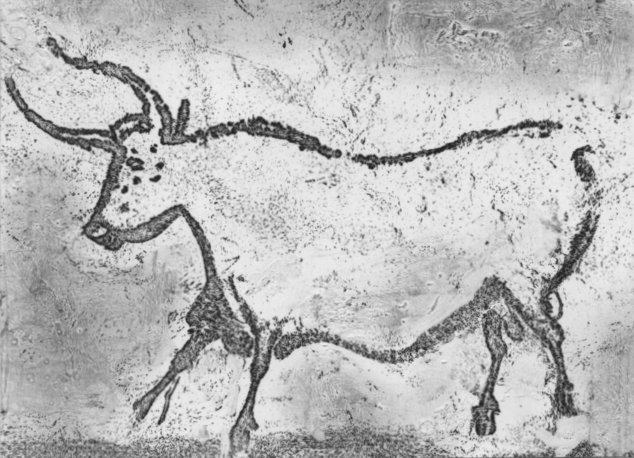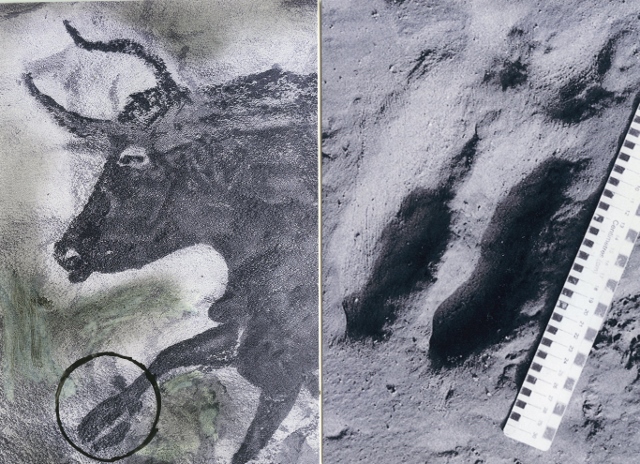|
|
Some notes about the Aurochs All but one of the species whose tracks have been preserved in the Holocene mud
strata at Formby Point are still alive today These
are: Red deer, Roe deer, Wild boar, Dog / Wolf, Sheep / Goat, unshod Horse, Crane, Oystercatcher and Heron. Their appearance
and their footprints have not changed appreciably over the ten millennia since the last Ice Age. However, the hoofprints
of Red Deer (now 8-9cm long, but 12-14cm in length some 7000-5000 years ago) indicate a far larger species during the Mesolithic
and Neolithic periods. Crane footprints would also suggest a slightly larger species than today’s. (The
‘Collins Guide to Animal Tracks and Signs’ by Preben Bang and Preben Dahlstrøm provides an excellent guide
to the shape and gait characteristics of these animals and birds.) The one exception to the fauna found on prehistoric Formby Point is the Aurochs It is thought that this species of wild cattle had been hunted into extinction in the British
Isles by the end of the Bronze Age, about 3000 years ago. It survived longer and well into the historic period in Continental
Europe, but even then, its size, speed and ferocity made it a much prized animal to hunt. The last Aurochs died –
of old age – in the Jaktorów forests in Poland in 1627. So, what do we know about this magnificent beast? We’ll begin with the name – whose singular and plural forms are sometimes a source
of confusion! Its prehistoric name is not known, but to the Germanic peoples of Europe it was the Ur and this was Latinised
by the Romans to Urus (the etymology of ur would suggest an association with ‘dampness’, ‘moisture’,
‘liquid’, - which indicate well its habitats). In
mediaeval German –ohso (ox) was appended, giving the form urohso, which subsequently became Auerochse, plural Auerochsen.
As a result of the growing interest in archaeology, that name entered the English language from Germany in 1869 as aurochs,
and pronounced /ˈɔːrɒks /. Aurochs is therefore both the singular and the plural form (although, echoing its modern German origins, the plural
aurochsen has occasionally been observed; some dictionaries also give aurochses). Linguistically, however, there
is no such animal as an ‘auroch’!
So what did the animal look like?
Moreover, the hoofprints depicted from a vertical perspective of some of these images draw attention to important tracking features such as the impressions made by the distal sesamoid bones as well as hoof registration. It is humbling and exciting to realize that an unknown Palaeolithic artist reached out across fifteen millennia to teach me, too, how to identify and follow aurochs tracks on Formby Point. There are early historical accounts of the aurochs Julius Caesar writes in Book VI
of his ‘Gallic Wars’:
And there is a brief, but powerful
sketch of an aurochs – the Ur – written in Anglo-Saxon about twelve hundred years ago:
If any readers should encounter
me on the foreshore at Formby Point, I shall gladly recite it for you in Anglo-Saxon......! |
Note from web editor: He really will recite Anglo Saxon poetry to you. I've seen him do it to an unsuspecting
woman at the British Museum who made the mistake of saying she'd never heard of an aurochs

